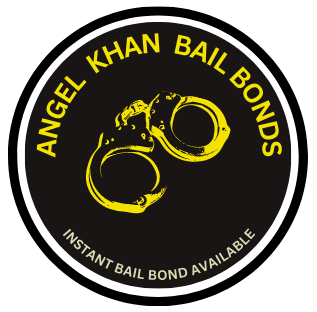Optimizing conversion funnels through A/B testing is a nuanced endeavor that requires more than just surface-level experiments. This deep-dive explores how to leverage data-driven, funnel-specific A/B testing with concrete, actionable techniques that enable marketers and UX professionals to identify bottlenecks, design targeted variations, and iterate effectively. Building upon the broader concepts outlined in “How to Use Data-Driven A/B Testing to Optimize Conversion Funnels”, we focus on the granular, technical, and strategic aspects necessary for mastery.
Table of Contents
- Setting Up Precise Control and Variations for Funnel-Specific Testing
- Technical Implementation: Accurate Tracking and Data Collection
- Analyzing Funnel-Specific Data for Bottlenecks and Opportunities
- Developing and Testing Highly Targeted Variations
- Iterating Based on Data for Continuous Funnel Improvement
- Avoiding Common Pitfalls in Funnel-Specific Testing
- Linking Funnel Optimization to Business Goals
Setting Up Precise Control and Variations for Funnel-Specific Testing
Defining Micro-Goals Within Each Funnel Stage
To effectively measure and influence user behavior, break down your funnel into micro-goals aligned with each stage. For example, in an e-commerce checkout process:
- Product Page: Clicks on “Add to Cart”
- Shopping Cart: Proceed to Checkout button clicks
- Checkout: Form completions, payment initiation
- Post-Checkout: Confirmation page views
Use these as primary metrics for your control and variation success criteria, enabling granular insights into where drop-offs occur and which changes impact specific actions.
Designing Variations Targeting User Behaviors and Drop-Off Points
Create variations that directly address identified bottlenecks. For example, if data shows high abandonment at the payment step:
- Test different CTA wording like “Complete Purchase” vs. “Pay Now”
- Reduce form length or add progress indicators
- Alter trust signals (e.g., security badges, reviews)
For each variation, ensure the hypothesis is clear: e.g., “Simplifying the form will reduce friction and increase completions.”
Implementing Variations with Proper Segmentation
Segment your audience to uncover nuanced insights. Use traffic source, device type, or user demographics to:
- Run tailored variations for mobile vs. desktop users
- Compare behaviors across traffic channels (organic, paid, referral)
- Identify segment-specific barriers—e.g., longer forms may deter mobile users more
Leverage segmentation to prioritize high-impact changes and avoid broad assumptions that dilute your testing insights.
Technical Implementation: Accurate Tracking and Data Collection for Funnel-Level Variations
Embedding Custom Event Tracking for Funnel Actions
Implement custom JavaScript events to capture user actions at each funnel step. For example:
// Example: Track Add to Cart
document.querySelector('.add-to-cart-btn').addEventListener('click', function() {
dataLayer.push({'event': 'addToCart', 'productID': '12345'});
});
Ensure each event includes contextual data like product ID, source, and device type for segmentation.
Using Tag Managers to Isolate Funnel Data
Configure Google Tag Manager (GTM) to:
- Create dedicated triggers for each funnel step (e.g., button clicks, form submissions)
- Assign custom variables to capture contextual info (traffic source, device)
- Set up separate tags for control and variation tracking
By structuring your GTM container, you can isolate and analyze data at a granular level, minimizing cross-contamination of funnel stages.
Ensuring Data Integrity: Pitfalls and Solutions
Common issues include duplicate events, missing data, or misaligned timestamps. To mitigate this:
- Implement debounce logic to prevent duplicate event firing
- Use unique event IDs or session identifiers
- Regularly audit your data layer and event logs for anomalies
Set up automated data validation scripts to flag inconsistencies, and always test in staging environments before deploying live.
Analyzing Funnel-Specific Data to Detect Bottlenecks and Opportunities
Segmenting Data by Funnel Stage and User Behavior
Use statistical tools like SQL queries, Google Data Studio, or BI dashboards to segment data:
- Calculate drop-off rates at each stage by segment
- Identify stages with the highest abandonment rates per user group
- Apply cohort analysis to see how behaviors evolve over time
Applying Statistical Significance Tests
Use appropriate tests to validate variations:
- Chi-square test for categorical data (e.g., conversion vs. no conversion)
- G-test as an alternative for large datasets
- Set significance thresholds (commonly p < 0.05) and compute confidence intervals
Expert Tip: Always ensure your sample sizes are sufficient to detect meaningful differences—use power analysis to determine minimum required sample sizes for each stage.
Visualizing Funnel Data for Actionable Insights
Leverage heatmaps and path analysis tools like Hotjar, Crazy Egg, or custom dashboards to:
- Identify where users diverge from expected flows
- Detect patterns in user navigation that lead to drop-offs
- Prioritize changes based on visualized bottlenecks
Combine quantitative data with qualitative insights for a comprehensive understanding of the user journey.
Developing and Testing Highly Targeted Variations for Funnel Optimization
Creating Variations Focused on Specific Funnel Barriers
Identify key barriers and develop variations addressing them directly. For example:
- Reduce form complexity by breaking it into smaller steps
- Test different CTA wording emphasizing urgency (“Buy Now”) vs. reassurance (“Secure Your Order”)
- Alter the visual hierarchy to draw attention to critical actions
Using Multivariate Testing Within a Funnel Step
Implement multivariate tests to evaluate multiple elements simultaneously. For example, on a checkout page:
- Test headline variations, CTA button color, and form field labels together
- Use tools like Optimizely or VWO to set up factorial designs
- Analyze interaction effects to discover the most potent element combinations
Practical Example: Testing a New CTA Button on the Checkout Page
- Hypothesize: A brighter CTA button increases clicks by 15%
- Design Variations: Standard blue button vs. bright orange button
- Set Up Tracking: Use GTM to record clicks with event labels
- Run Test: Split traffic equally, ensure sample size exceeds minimum threshold
- Analyze Results: Use Chi-square test to confirm statistical significance
- Implement: Roll out winning variation, monitor ongoing performance
Iterating Based on Data: Refining Variations for Continuous Funnel Improvement
Prioritizing Variations by Impact and Confidence
Use a scoring matrix to evaluate:
- Potential Impact: How much could this change improve conversions?
- Confidence Level: How statistically certain are you of the results?
- Prioritize high-impact, high-confidence tests for immediate rollout.
Implementing Sequential Testing for Effective Niche Improvements
Adopt a sequential approach:
- Test one variable at a time to isolate effects
- Use findings to inform subsequent tests, refining hypotheses iteratively
- Maintain detailed documentation to track changes and learnings
Case Study: Incremental Cart Abandonment Reduction
By systematically testing improvements such as:
- Adding trust badges
- Streamlining forms
- Altering CTA copy
And measuring their cumulative effect, a 20% reduction in cart abandonment was achieved over three months, demonstrating the power of structured, data-driven iteration.
Avoiding Common Pitfalls in Funnel-Specific A/B Testing
Ensuring Sufficient Sample Sizes
Calculate minimum sample sizes using power analysis tools like G*Power or online calculators. For example, detecting a 10% lift with 80% power and 95% confidence might require at least 1,000 conversions per variation at each funnel stage.
Preventing Overfitting to Short-Term Data
Avoid drawing conclusions from small datasets. Use Bayesian methods or sequential testing to adapt and confirm results over time, ensuring stability before full deployment.
Controlling External Influences
Account for seasonal effects, marketing campaigns, or traffic source shifts that can skew data. Use control groups or holdout segments to isolate the true impact of your variations.
Pro Tip: Regularly review your tracking setup and data quality. Implement automated alerts for anomalies to catch issues early.
Linking Data-Driven Funnel Optimization to Business Goals
How Precise Funnel Testing Enhances Conversion Metrics
By isolating and improving specific funnel stages, you directly increase overall conversion rate, average order value, and customer lifetime value. For instance, reducing checkout friction can lift revenue by 10-15%.
Connecting Funnel Insights to Broader Marketing and UX Strategies
Use funnel data to inform overarching strategies, such as targeted retargeting for high-drop-off segments or personalized UX flows that address specific user pain points.
Reinforcing Continuous, Data-Driven Testing for Sustained Growth
Embed funnel analysis into your ongoing optimization cycle. Regularly revisit micro-goals, update hypotheses, and iterate variations based on fresh data to maintain momentum and adapt to evolving user behaviors.
In conclusion, mastering stage-specific, data-driven A/B testing empowers you to pinpoint precise barriers within your funnel, craft targeted variations, and systematically improve conversion rates. This approach transforms guesswork into evidence-based decision-making, ensuring sustained growth and a competitive edge. For a broader understanding of foundational principles, revisit “{tier1_theme}”.

